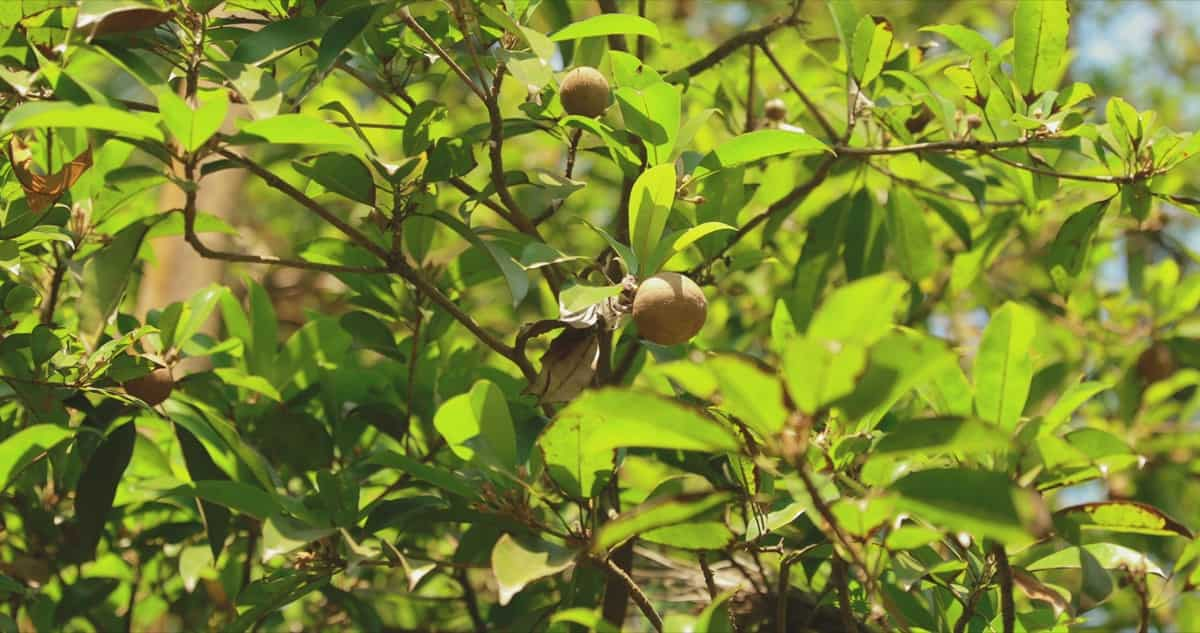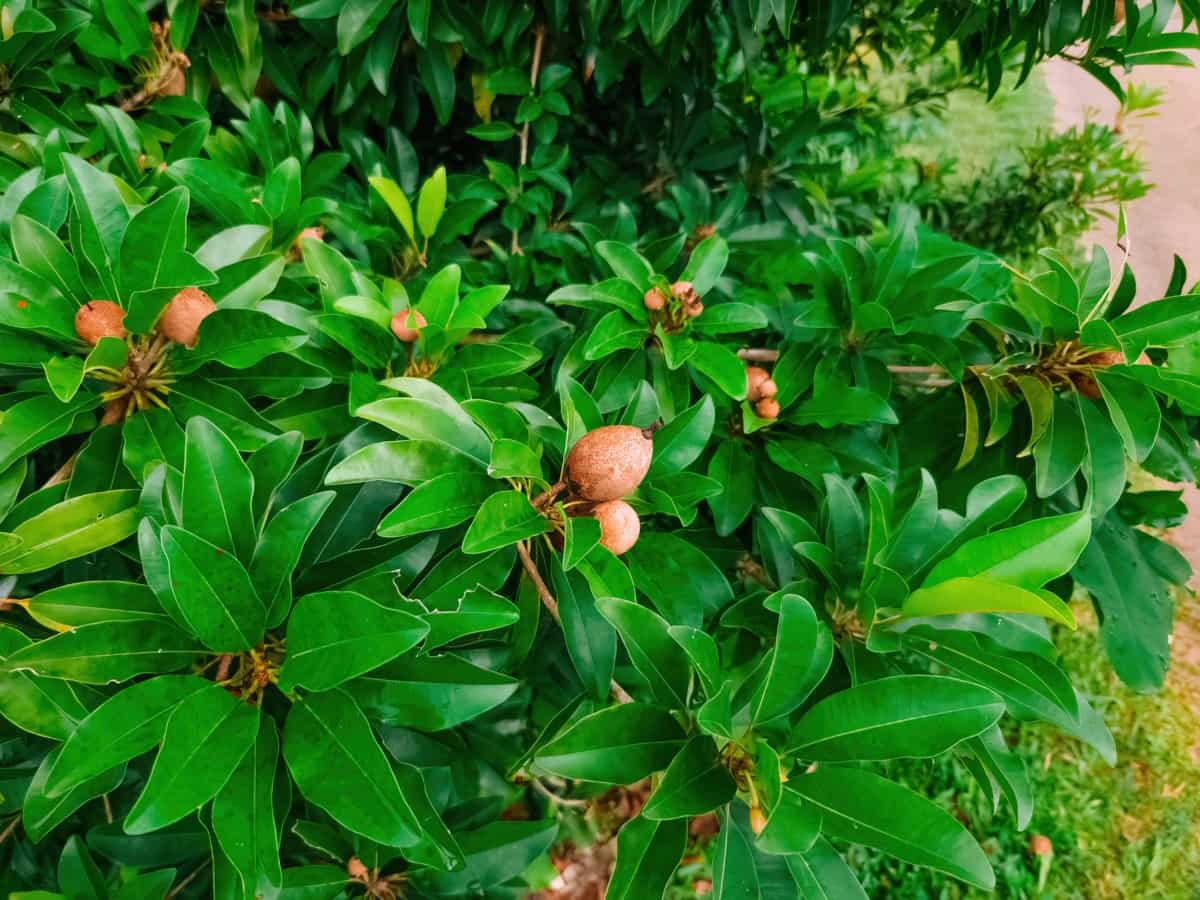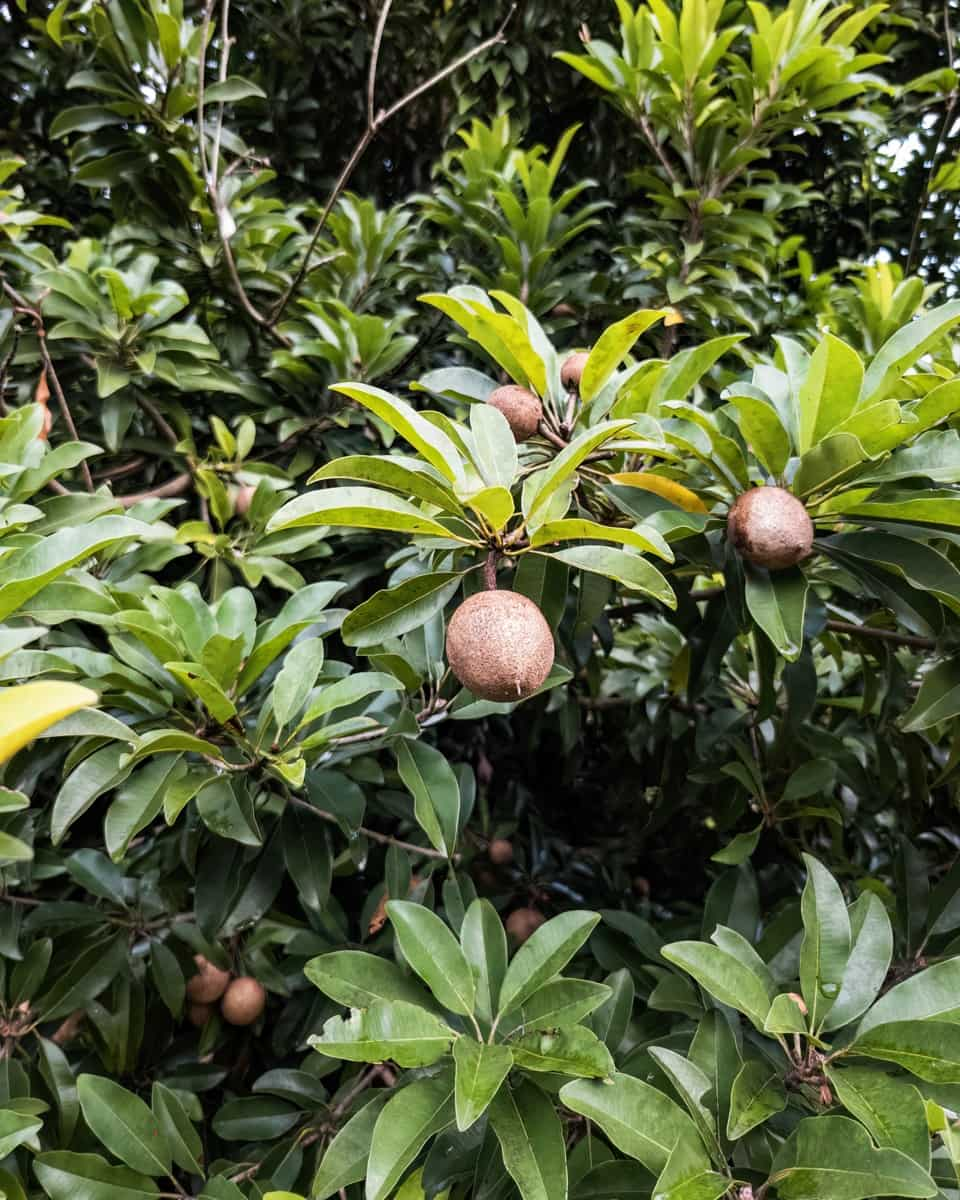The lush greenery of Sapodilla trees houses sweet, grainy fruits, a delicacy relished globally. However, growing these delicacies is a labor of love, demanding meticulous attention to pollination. Particularly, the question “How do you hand pollinate Sapodilla?” often echoes in the orchards. The journey from Sapodilla flowers to fruit involves a symphony of nature, intricate steps, and some human assistance. It is critical to grasp that pollination is the fundamental link in the chain that leads to the sweet success of a bountiful Sapodilla harvest.

How to Pollinate Sapodila Flowers
Hand Pollination of Sapodilla Flowers
To address the question, “How do you hand pollinate Sapodilla?” we have to delve into the intricacies of this process. Hand pollination of Sapodilla flowers requires both care and precision. It involves picking up pollen from the male flower and gently applying it to the female flower.
One can use a small brush, cotton swab, or soft feather. The purpose is to mimic the action of pollinators like bees and butterflies. It is a meticulous process, almost an art form, demanding patience and dexterity from the gardener. Nevertheless, the result, a tree laden with succulent Sapodillas, makes it all worthwhile.
Natural Pollination Methods for Sapodilla Trees
Apart from hand pollination, there are also natural pollination methods for Sapodilla trees. These involve leveraging the powers of nature to carry out the task. Pollinators like bees, butterflies, and even the wind play a pivotal role in this process.
Bees, in particular, are tireless workers in Sapodilla orchards, moving from flower to flower, spreading pollen along their route. This natural process, while less controlled than hand pollination, harnesses the power and beauty of nature to yield the desired results. However, it requires the presence of robust pollinator populations and favorable weather conditions.
Tips for Hand-Pollinating Sapodilla Flowers
Now, coming to tips for hand-pollinating Sapodilla flowers, the first tip is to carry out the pollination early in the morning. This is the time when the pollen is fresh and most viable. Another tip is to be gentle when transferring the pollen to avoid damaging the delicate flowers. Also, ensure that the flowers are mature enough. Immature flowers may not have viable pollen or be ready to receive it. Last but not least, keep a close eye on the weather. Weather conditions such as temperature and humidity significantly affect pollination success.
Timing of Sapodilla Flower Pollination
An equally significant aspect is the timing of Sapodilla flower pollination. Pollination should ideally be carried out when the flowers are fully open and the pollen is most fertile. This is usually early in the morning. The flowers also signal their readiness for pollination by releasing a subtle fragrance. Neglecting the proper timing can result in unsuccessful pollination, making all the efforts futile. Therefore, understanding and recognizing the right timing is crucial to Sapodilla flower pollination.
In case you missed it: 9 Causes of Dying Sapodilla Trees and How to Fix Them?

Importance of Cross-Pollination in Sapodilla Trees
The importance of cross-pollination in Sapodilla trees cannot be overstated. Cross-pollination introduces genetic diversity, leading to stronger, healthier trees and more flavorful fruits. It involves the transfer of pollen from one tree to another. The process strengthens the resilience of Sapodilla trees, allowing them to better resist diseases and pests. It also fosters the production of larger, tastier fruits, which is the ultimate goal for any Sapodilla grower. Thus, cross-pollination is a vital cog in the wheel of successful Sapodilla cultivation.
Factors Affecting Sapodilla Flower Pollination
Numerous factors affect Sapodilla flower pollination. Weather conditions are among the most influential factors. Extreme temperatures, heavy rainfall, or high winds can interfere with pollination. Other critical factors include the tree’s health and pollinators’ presence. The healthier the tree, the more likely it is to produce many viable flowers. Similarly, the presence of pollinators such as bees and butterflies significantly influences the success of pollination.
Challenges in Sapodilla Flower Pollination
There are several challenges in Sapodilla flower pollination. First and foremost is the variability of weather conditions. Unfavorable weather can hinder both hand and natural pollination processes. Next, the availability and activity of pollinators can be unpredictable. Then, the timing of the pollination is another challenge. It demands close observation and careful scheduling. Lastly, the potential for diseases and pests pose a constant threat. They can damage the flowers, making pollination difficult or even impossible.
Benefits of Successful Sapodilla Flower Pollination
The benefits of successful Sapodilla flower pollination are plenty. Firstly, it leads to the production of fruits, the primary aim of any Sapodilla grower. More successful pollination translates into a more abundant harvest. Secondly, it ensures the health and longevity of the Sapodilla trees.
In case you missed it: How to Pollinate Lemon Tree Flowers: Hand Pollination, Natural Pollination Methods, and Tips

The process of pollination stimulates the trees, keeping them healthy and vibrant. Thirdly, successful pollination contributes to the larger ecosystem. It supports the survival of pollinators and maintains biodiversity. In a nutshell, successful Sapodilla flower pollination benefits the growers and the larger ecosystem.
Involving the Community in Sapodilla Flower Pollination
A collective effort can often yield better results. Involving the community in Sapodilla flower pollination can be an excellent step towards better yields and healthier trees. Sharing knowledge, skills, and resources can improve the pollination process and foster a sense of community.
Group efforts can involve organizing joint pollination drives, sharing tips, and arranging discussions around the best practices. Additionally, working together can contribute to safeguarding the local pollinator population, a critical factor in successful natural pollination. Engaging the community is not only about achieving better Sapodilla yields; it’s also about promoting biodiversity and fostering a sense of shared responsibility towards the environment.
Emphasizing the Role of Research and Education in Sapodilla Flower Pollination
Lastly, the role of research and education in Sapodilla flower pollination cannot be overstated. Continuous research can help discover better pollination techniques, understand the impact of various factors on Sapodilla flower pollination, and devise effective ways to tackle challenges. It’s crucial to stay updated with the latest findings and integrate them into the pollination process.
Meanwhile, education is critical in disseminating knowledge and encouraging more people to adopt best practices. This can range from conducting workshops for Sapodilla growers to integrating pollination studies into school curriculums. Research and education, hence, serve as the backbone of effective and sustainable Sapodilla flower pollination.
In case you missed it: DIY Methods to Improve Soil Quality in Your Garden: Treatment and Solutions

Conclusion
While sapodilla flower pollination is a complex and sometimes challenging process, is also rewarding. Whether through hand pollination or natural methods, the aim is to ensure the successful transformation of flowers into delectable Sapodilla fruits. Every aspect plays a crucial role in the process, from understanding the timing to overcoming the challenges. Hence, the journey of Sapodilla pollination is indeed a journey of diligence, patience, and, ultimately, sweet success.
- Feed Your Flock for Less: Top 10 Tips to Save on Chicken Feed
- Ultimate Guide to Ossabaw Island Hog: Breeding, Raising, Diet, and Care
- Hatching Answers: The Top 10 Reasons Your Chickens Aren’t Laying Eggs
- Eggs and Economics: Breaking Down the Cost of Raising Backyard Chickens
- Defend Your Greens: Proven Methods to Keep Iguanas Out of Your Garden
- Ultimate Guide to Cinnamon Queen Chicken: A Comprehensive Guide for Beginners
- Ultimate Guide to California Tan Chicken: Breeding, Raising, Diet, Egg-Production and Care
- Ultimate Guide to Marsh Daisy Chicken: Breeding, Raising, Diet, and Care
- 10 Types of Chicken Farming Businesses You Can Start for Profits